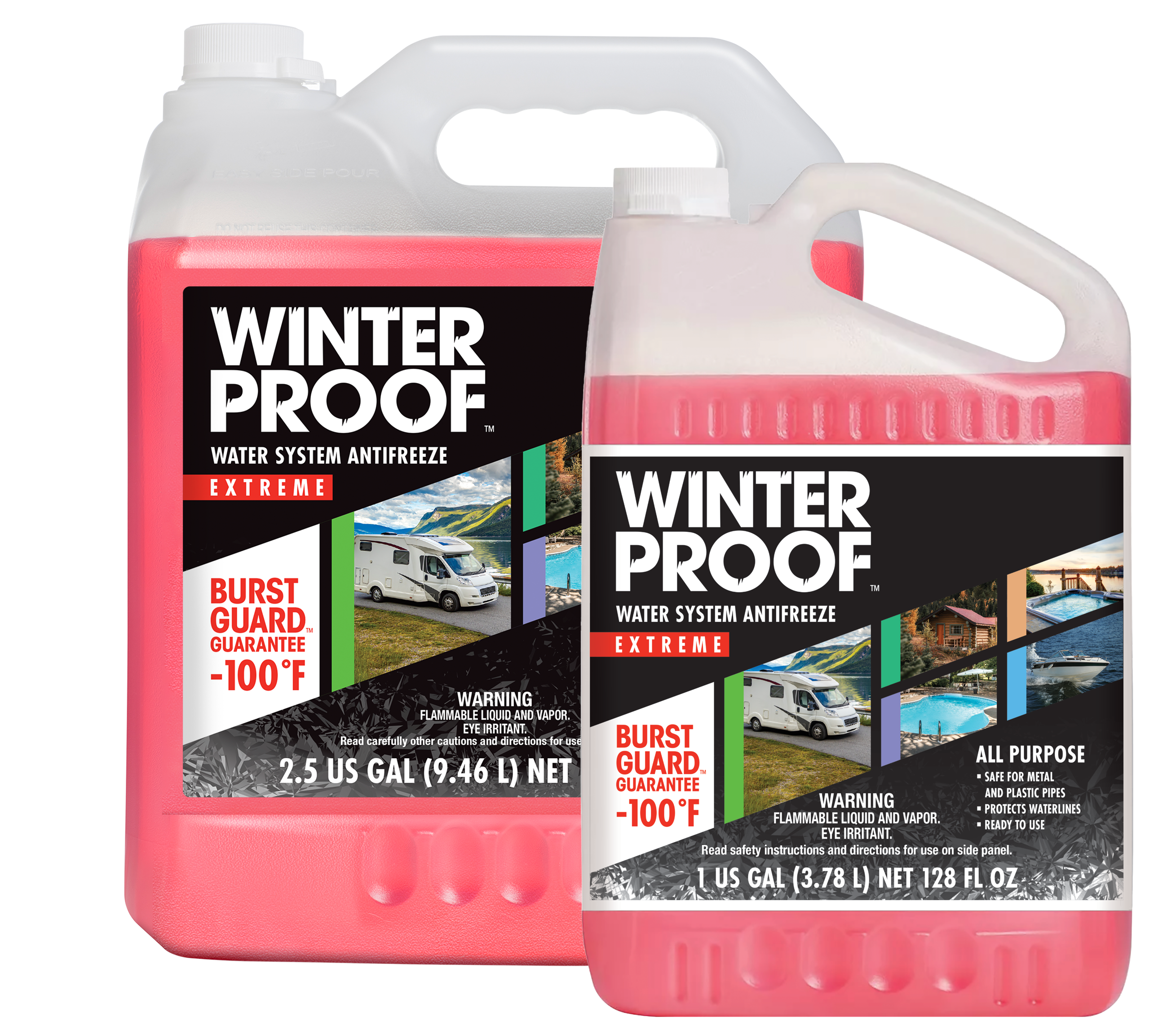WINTERPROOF™ Water System Antifreeze provides you with peace of mind:
- Formulated for various applications.
- Total water system protection
- Prevents waterline bursts
- Safe for plastic and metal pipes
- Lubricates waterlines, pipes, and seals
- Ready to use formula.
Product Specifications
| Item # | Unit/Case Pack | UPC | SCC14 |
|---|---|---|---|
| 35-364WPUS/13147 | 4 x 1 USG | 056438909545 | 40056438909543 |
| 35-365WPUS/13148 | 2 x 2.5 USG | 056438909552 | 40056438909552 |
| 35-369WPUS/13149 | 4 x 55 USG | - | - |
| 35-369WPUS-275/13150 | 1 x 275 USG | - | - |


